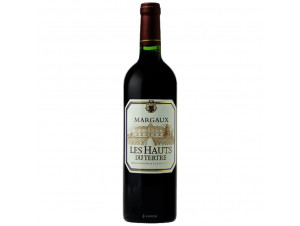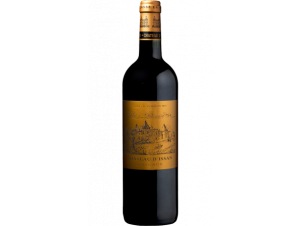You have no items in your shopping cart.
Wine Margaux
Château Margaux is an internationally renowned wine and a premier grand cru classé in 1855. It is said that Ernest Hemingway, who loved it so much, named his daughter Margaux as a tribute to the exceptional wine. But this name also designates an appellation of controlled origin which counts no less than 21 classified growths within the five communes of the appellation area. Read more on Margaux
-
Top Selling-34%
-
Top Selling
-
Top Selling
Appellation Margaux
The advent of Margaux dates back to the Renaissance
It was in the 16th century that the bourdieux, wine-growing properties of the great Bordeaux families began to appear, and which were the ancestors of the future great Margaux châteaux. The technicality and know-how of Dutch engineers (invention of tidal valves), combined with the reclamation of the soil carried out under the reign of Henry IV, allowed the establishment of vines on gravelly hilltops. By 1760, most of the crus of Margaux were established, and Belleyme's map, which shows the locations of the vineyards at the time, is almost identical to more recent maps of the region.
The wines of Margaux have 21 crus in the 1855 classification, as well as two exceptional crus bourgeois and eight crus bourgeois supérieurs in the 1932 Médoc crus bourgeois classification. It was in 1923 that the Bordeaux Civil Court handed down a judgement intended to fix the contours of the future appellation: Margaux, Cantenac, Soussans, Arsac and Labarde were the five communes that delimited it. The Margaux appellation d'origine contrôlée was defined by the decree of 29 October 1955.
Margaux is one of the most prestigious appellations in Bordeaux
The AOC is established on remarkable graves, probably the most beautiful in Bordeaux. It is thanks to this optimal environment that the Margaux wines are able to develop such fine aromatics and such great ageing potential. Located in the south of the Médoc, it covers 1,400 ha and produces around 63,000 hl of red wine per year. Added to this is the small production of white wine from Château Margaux, but under the Bordeaux AOC (Pavillon Blanc).
The appellation is one of the most prestigious in the Médoc and also one of the largest. It includes five communes: Arsac, Cantenac, Labarde, Margaux and Soussans. Quaternary deposits of the Garonne, composed of gravels (gravels dragged), and pebbles coated with sand more or less clayey, are deposited on a chalky soil. Croups and terraces are organized in stages at heights that vary between 6 and 33 m. A composition based on cabernet-sauvignon (75%), merlot (20%), cabernet franc (2%) and petit verdot (3%) produces refined wines, with a harmonious and ample palate, carried by a framework of delicate tannins. The finish is all elegance. The Margaux is a wine with strong cellaring potential that evolves throughout its existence.
Margaux wines are characterised by an unrivalled elegance
The cabernet-sauvignon, which defines the structure and bouquet of the Margaux, allows for significant aging potential. After ageing, the Margins are elegant and fine, with a long finish that highlights spicy and roasted flavours.
The colour, as with many wines from the region, is distinguished by hues between ruby and garnet, possibly tending towards purple. Elegance is the key word for these exceptional Bordeaux wines.
The bouquet is complex, fruit mingles with spices for an invitation to travel. Cherry and redcurrant are accompanied by notes of spice, cinnamon, roast. And sometimes, with maturity, notes of undergrowth, mushrooms, cloves can appear. The tannins, though quite present, are mellow, round and suave.
The lingering finish prolongs these sensations of richness, elegance and finesse. The Margaux can be married as well with red or white meat, as with cheeses... But they particularly stand out when served with game or entrecote à la Bordelaise, a speciality of the region.
Margaux boasts a good number of classified growths
While the appellation has twenty-one châteaux, it has a large number of crus classés en 1855. Margaux and Cantenac, in particular, have nine each.
Château Margaux
Château Margaux is a renowned 262-hectare wine estate in the Médoc. It was classified as a premier grand cru in the 1855 classification. The first writings attesting to its existence under the name Château de la Mothe Margaux date from the 13th century. The estate has been classified as a historical monument since 1946. The cellars are 100 metres long and 23 metres wide and are covered with an oak framework supported by Doric columns. Corinne Mentzelopoulos currently runs the estate with the help of oenologist Philippe Bascaules. The winery houses a state-of-the-art research laboratory, for an alliance between tradition and modernity, to perpetuate the greatness of this unique cru.Château Brane-Cantenac
Château de Brane Cantenac, is renowned for its exceptional terroir, the Brane plateau, which is the source of its original aromatic characteristics. It is classified 2nd great growth of the Margaux AOC in the 1855 classification. Located in Cantenac, the estate covers about 75 hectares. In 1992, Lucien Lurton, at the head of eleven châteaux and six classified growths, handed over all his properties to his children. It was Henri Lurton who took over the vineyard. An oenologist by profession, with a knowledge of the terroir and a taste for research and technology, he continues to produce the exceptional wines for which the estate is known.Château Durfort-Vivens
The name of this estate, 2nd Grand Cru Classé in the 1855 classification, is due to Thomas de Durfort who became Lord of Margaux in 1450. In 1824, Viscount Robert Labat de Vivens, a friend of Montesquieu, and famous for his research work, became the owner of the Durfort estate, to which he now attached his name. After studying at a business school, Gonzague Lurton was entrusted with the property in 1992 by his father Lucien Lurton. He is keen to favour traditional winemaking methods. For a large part of its vintages, the estate uses oak tank vinification under wood. Part of the estate has been successfully converted to biodynamic farming.
Bordeaux appellations
Côtes-de-Bordeaux-Saint-Macaire














































 TWIL - Achat de Vin
TWIL - Achat de Vin


